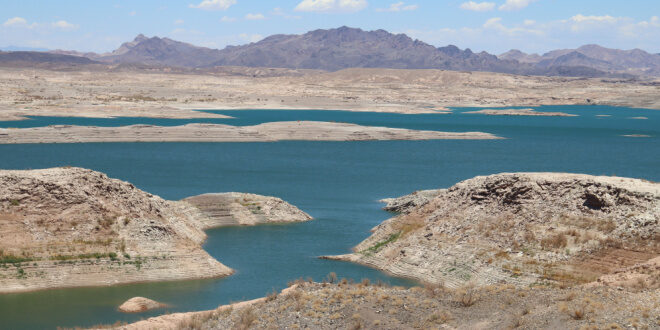Beginning in 2023, California water agencies have pledged to reduce water usage in the Colorado River by 400,000 acre-feet each year through 2026 to protect storage in Lake Mead and help stabilize the Colorado River reservoir system.
In a letter to the U.S. Bureau of Reclamation and the U.S. Department of the Interior, four water agencies and the Colorado River Board of California volunteered to conserve water— totaling 1.6 million acre-feet over that four-year period— that otherwise would be used by California communities and farms to help stabilize low reservoirs amid unprecedented drought conditions across the Colorado River basin.
“Given dire drought conditions across the region and dangerously low reservoir levels, we firmly believe that all water users within the Basin must take immediate voluntary actions to stabilize water supplies in the Basin’s major reservoirs,” the letter stated.
The agencies – Metropolitan Water District of Southern California, Imperial Irrigation District, Coachella Valley Water District and Palo Verde Irrigation District – said they would need to utilize funding opportunities provided by the federal Inflation Reduction Act and other federal programs to enable this voluntary conservation. They also said the voluntary conservation actions were dependent on a clear federal commitment to contribute to efforts to stabilize the Salton Sea, which is receding due to reduced inflows from existing water conservation actions in Imperial Valley and will further shrink as additional water is conserved in the region.
The letter noted that while a broader multi-state agreement to conserve water has not yet been reached, the California agencies are prepared to take voluntary action now – contingent on federal funding and commitments on the Salton Sea – to conserve water in coming months.
“California water agencies are stepping up in a big way with this proposal,” explained California Natural Resources Secretary Wade Crowfoot. “Everyone in the basin agrees that extraordinary measures are needed to prevent the system from collapsing. But to date, months of negotiations have yielded no concrete action. Simply put, we can’t wait any longer to act and are therefore stepping up to leave more water in the reservoirs. We hope water users across the basin will follow suit.”
 California Water News Daily Your Source For Water News in California
California Water News Daily Your Source For Water News in California


